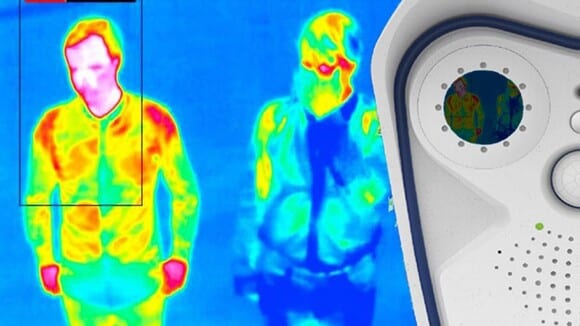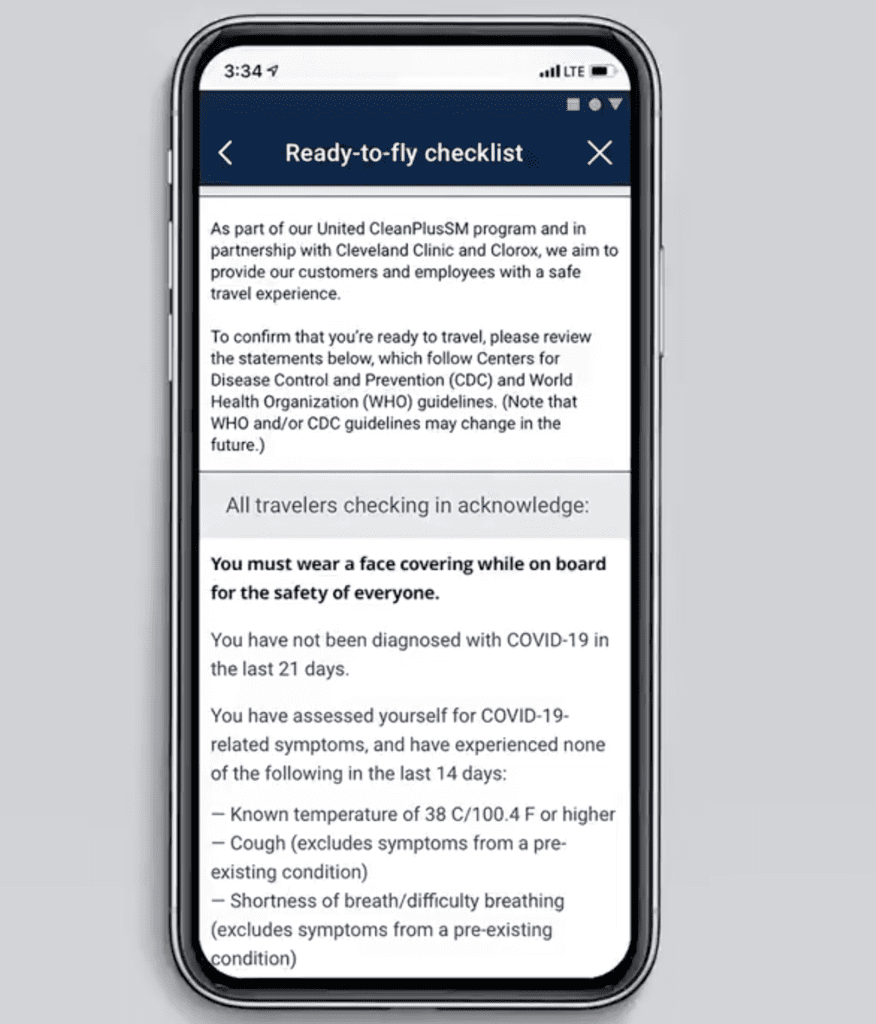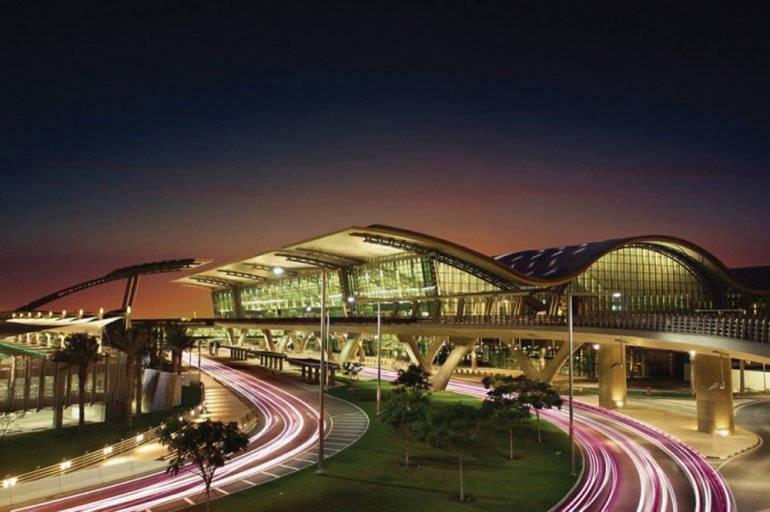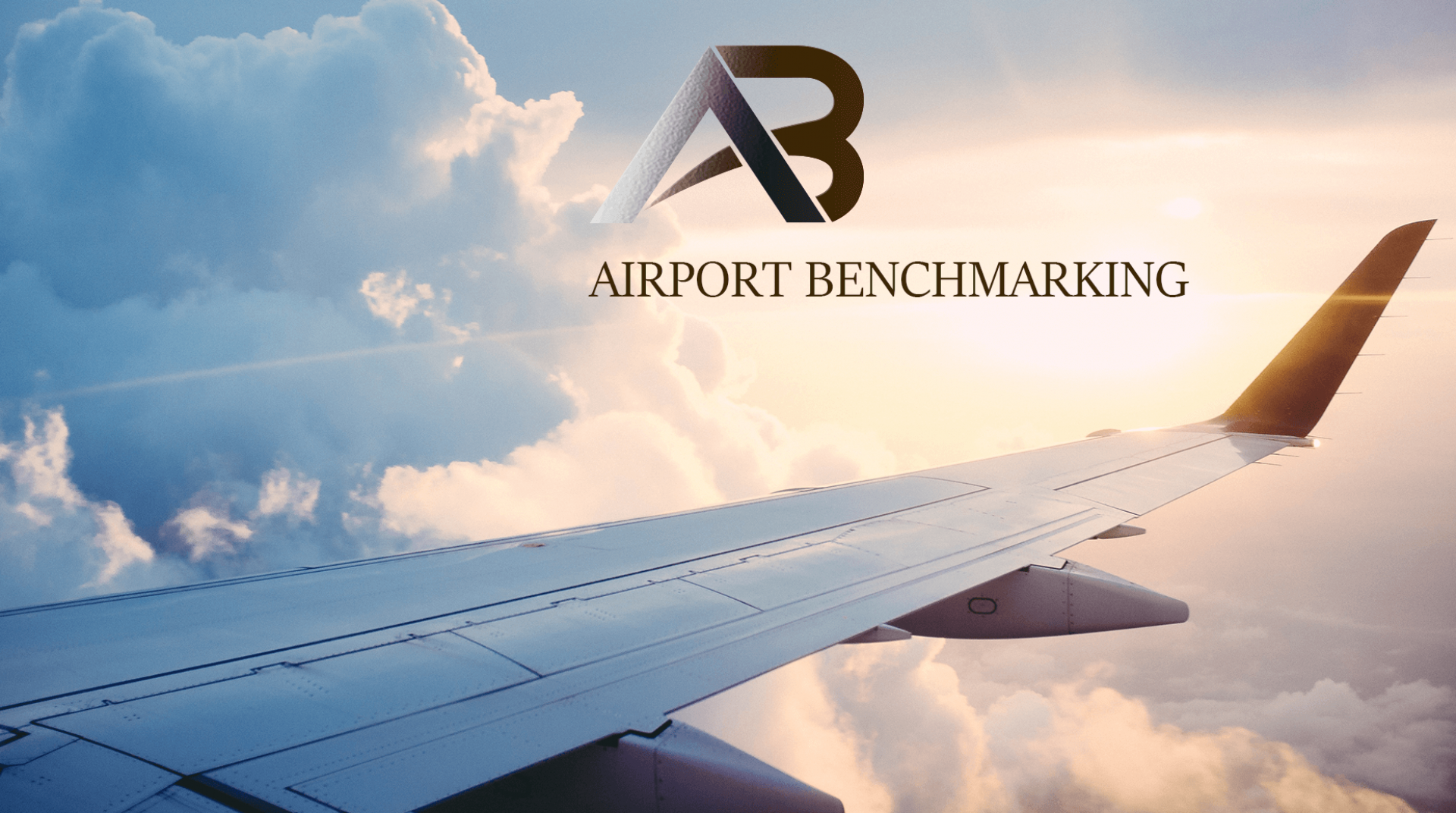Should Airlines Standardize Pre-flight Testing for COVID-19?
By Woodrow Bellamy III | June 16, 2020
Send Feedback | @WBellamyIIIAC

Airlines are slowly starting to operate more flights as regulators in different regions of the world begin to relax travel restrictions and introduce new guidelines. But do operators need a standardized approach to pre-flight COVID-19 testing to make the process more efficient and help restore confidence in passengers that they can safely fly during the pandemic?
The Transportation Security Administration’s (TSA) daily publishing of the number of travelers moving through U.S. airports this year compared to 2019 hit a COVID-19 pandemic high on June 14, with 544,046 passengers making their way to airplane — still a ways off from the more than 2 million passengers recorded on the same day a year ago, but a vast improvement from the pandemic low of just under 88,000 recorded on Apr. 14. On Monday, most countries in Europe followed the European Union’s guidelines for reopening borders to inter-European travel, with plans to reopen to international travel at a later date.
EasyJet and Lufthansa-owned Brussels Airlines restarted operations this week as European internal borders reopened. Others including Air France, British Airways and Wizz Air are also increasing the number of flights they operate. Regulators in China and the U.S. have also reached a mutual agreement to allow airlines such as Delta and United to start resuming flights to the region.
But as more travelers start to fill airport lounges and aircraft cabins, the industry is still trying to figure out the best method for testing passengers prior to getting onboard. On Tuesday June 16, the International Air Transport Association (IATA) and the International Civil Aviation Organization (ICAO) published new guidance on COVID-19 testing for air travel, with the agency advocating for the use of tests that are accurate, fast and can be performed hundreds of times per hour at busy airports.
Dr. David Powell, medical advisor for IATA, provided some updates on how airlines can achieve their recommended guidelines for COVID-19 testing moving forward during the organization’s weekly pandemic media briefing.

“We know that we’ve been looking at testing to facilitate air transport really in two areas. One is can we make the fight itself self safer by testing prior to flight and the second area is can we use testing to reduce the chance of importing somebody whose infectious on an international flight,” Powell said.
Other considerations for airlines include who will administer the test and verify the results, considering most airlines do not have medical experts on staff and readily available to perform such testing at airports. IATA believes the verification and testing should be managed by a public health agency, therapeutic agency or scientific agency.
Some airlines and airports have already adopted their own measures for testing for COVID-19 related symptoms, in place of the type of testing outlined by Powell. Heathrow Airport is actively trialing the use of UV sanitation, facial recognition thermal screening technology and contactless security procedures. In Terminal 2, the airport is using camera detection systems that are capable of monitoring the temperatures of multiple people as they move through the airport.
Emirates, in partnership with the Dubai Health Authority, has been performing COVID-19 blood testing on certain flights at Dubai Airport, while Etihad Airways partnered with Elenium Automation to trial new technology which allows self-service devices at airports to be used to help identify travelers with medical conditions, potentially including the early stages of COVID-19. United Airlines has integrated a new “Ready-to-fly” checklist in its mobile application, that features a “health self-assessment” as part of its check-in process.
IATA’s Powell describes the Real-time Reverse Transcriptase Polymerase Chain Reaction (PCR) as the “gold standard” he is recommending for airlines to adopt in a way that is administered by medical experts. The current standard process for a PCR test involves a swab going through the nose and down into the back of the throat, although Powell believes less invasive versions are becoming available that could be administered by airlines.
“There are some tests being developed which will hopefully be able to use a saliva sample instead, because that’s much easier, you can put a little swab in the mouth and take it out again and you also don’t need a trained health care worker to administer that test,” Powell said.
When asked whether the development of an industry-wide pre-flight testing standard could help, Powell explained the positives and negatives associated with developing such a standard.
“It’s certainly likely that widespread testing would increase [passenger] confidence, but it comes at a cost, in terms of the price, the delay, imperfect reliability and the discomfort of it all. Nothing in COVID-19 is perfect,” he said.
source : https://www.aviationtoday.com/2020/06/16/airlines-standardize-pre-flight-testing-covid-19/
Charles de Gaulle Airport joins EASA COVID-19 monitoring programme
Charles de Gaulle Airport is among 10 other aviation stakeholders to join EASA’s programme to assess the effectiveness of its COVID-19 safety measures.
Paris-Charles de Gaulle Airport (CDG) is joining 10 other aviation stakeholders to abide by European Union Aviation Safety Agency (EASA) and European Center for Disease Prevention and Control (ECDC) COVID-19 guidelines.
These measures, largely implemented at Charles de Gaulle Airport since early May 2020, helped the EASA and ECDC to establish a pragmatic and comprehensive list of recommendations, aiming at ensuring health and safety standards for air passengers and aircraft/airport operators during the COVID-19 pandemic – among which can be found: ensuring social distancing throughout the entire journey; the reinforcement of cleaning and disinfection protocols; mandatory wearing of facial coverings; and practising all hygiene recommendations, etc.
To monitor the implementation of those measures, the EASA launched a dedicated programme. The aim is to assess real-life situations concerned by EASA recommendations and to contribute to establishing a new sanitary standard at a European level, but also worldwide. The psychological dimension and the perception of those measures by the passengers will also be examined in this analysis.
To this end, Paris-Charles de Gaulle Airport is joining forces with airlines – such as easyJet on Nice and Toulouse routes, and Wizzair on Budapest routes – as well as Groupe ADP (who are also collaborating with Air France) to implement sanitary measures aligned with EASA recommendations in order to offer the best security standard.
In addition, since 28 May 2020, three ‘sanitary corridor’ test flights have been carried out between Paris and Reunion Island, where passengers must comply with a 14-day quarantine. Those experimentations involve the two airports, as well as airline partners – Air Austral and Air France – and the French Civil Aviation Authority (DGAC).
‘Sanitary corridors’ must guarantee to the destinations served that passengers do not display any COVID-19 symptoms prior to their departure, nor that they will be exposed to the virus during the journey, thanks to the implementation of the EASA recommendations. In order to ensure this, passengers are screened upon arrival at the airport. Consequently, airport and airline measures are harmonised between the airports of departure and arrival and certify that sanitary standards are met at every step of the journey for maximal protection.
source : https://www.internationalairportreview.com/news/118607/paris-charles-de-gaulle-airport-easa-covid-19-monitoring-programme/
Hamad International Airport reminds departing passengers of travel safety measures

The Peninsula Online
It is mandatory for all travelling passengers to wear face masks, without which access to the terminal building will be denied.
Doha: Hamad International Airport (HIA) has reminded departing passengers of the current safety measures to be observed and complied with while travelling, to ensure the safety of all passengers and airport staff.
“Passengers are advised not to travel to the airport if showing any of the following symptoms: fever, dry cough, shortness of breath and loss of smell or taste,” HIA said.
“Kindly follow the correct usage, replacement and disposal of face masks. Please ensure you carry a sufficient number of masks as well as alcohol-based hand sanitizing solutions for the duration of your journey. Passengers are urged to observe personal hygiene and frequently sanitize your hands. Sanitizing stations have been made available throughout the terminal,” HIA said on their website.
Passengers need to arrive at the airport no more than three hours prior to your flight to undergo all required checks.
All passengers will be subject to the thermal screening process at Hamad International Airport. Kindly note that only travelling passengers will be permitted access into the terminal.
“All passengers are requested to observe and comply with physical distancing requirements. Please follow the instructions provided by airport personnel as well as the advice displayed across the airport through signage and screens,” the website added.
If you have questions and doubts about your future travel plans through Hamad International Airport, visit HIA FAQ page.
ACI World releases new passenger and freight data showing impact of COVID-19
By the end of March 2020, passenger traffic experienced a global decline of almost 60 per cent as a result of the COVID-19 pandemic.
New figures from Airports Council International (ACI) World have reported that global passenger traffic declined by 55.9 per cent year-over-year by the end of March 2020 as a result of the unfolding COVID-19 pandemic. This followed a drop of 10.7 per cent in February 2020.
The effect on the freight industry is not yet as significant during March 2020, with global volumes declining by 14.4 per cent compared to March 2019.
ACI collects and analyses data from a significant sample of airports that provide regular reports on monthly passenger and air freight statistics, forming part of the world’s most comprehensive source for airport data.
ACI World Director General, Angela Gittens, said: “The second week of March 2020 was a turning point for the reaction to the COVID-19 pandemic, as national governments implemented strict confinement measures which brought the industry to a virtual halt. While the crisis’s impact on passenger traffic was mostly in the Asia-Pacific region in February 2020, March 2020 figures showed its spread across the world, affecting both domestic and international markets.”
She continued: “Global freight volumes have not been affected to the same extent as passenger traffic. The need to move time-sensitive shipments and vital supplies – including urgent medical supplies and goods to support the global economy – helped the freight industry avoid the level of declines in demand experienced by the passenger traffic segment.”
Passenger traffic
Global international and domestic passenger markets posted unprecedented declines, falling by 62.4 per cent and 50.6 per cent, respectively.
Among major regional passenger markets, Asia-Pacific continues to be the most impacted, with declines of 77.6 per cent in March 2020 for its international market and 54.4 per cent to its domestic market. The Middle East recorded a loss of 58.6 per cent.
North America and Europe were also badly affected by the ongoing crisis, losing more than half of their international passenger traffic in March (50.4 per cent and 60.1 per cent, respectively).
Africa’s passenger gains in the first two months of 2020 were erased by significant losses in March (46.0 per cent decline). Latin America-Caribbean’s good performance in the beginning of the year was offset by a loss of 41.1 per cent in March 2020, compared to the prior year.
Freight volumes
The international freight market moved significantly into negative territory in March 2020, with a loss of 15.7 per cent, compared to the slight gain of 0.4% per cent in February 2020.
For the third consecutive month, domestic freight continued its downward trend, reaching a fall of 11.1 per cent for the month, down from 2.4 per cent in February 2020 and 4.4 per cent in January 2020.
As a result, total freight figures for March 2020 posted significant declines at 14.4 per cent.
The impact of the COVID-19 pandemic has started to appear in all major freight markets. The global double-digit decline posted in March 2020 was mostly driven by Asia-Pacific (17.2 per cent) and Europe (16.4 per cent).
North America, on the other hand, recorded a less significant drop of 6.6 per cent in total freight volumes, mitigated by a relatively modest decrease in its domestic traffic of 1.6 per cent. North America’s international freight market, however, showed signs of weakness in falling by 13.8 per cent for the month of March 2020.
The Middle East (17.9 per cent), Africa (20.8 per cent) and Latin America-Caribbean (23.4 per cent) posted declines in line with major markets for March 2020.
full source at : https://www.internationalairportreview.com/news/118427/aci-world-passenger-freight-data-impact-covid-19/
Air Travel Volatility – Three Ways Airports Can Beat the Uncertainty

Despite the International Air Transport Association (IATA) warning that passenger demand will not fully recover until 2024, flight data consolidator OAG is reporting green shoots of recovery. Travel lockdowns are easing in many regions, with over sixty airlines relaunching services in June.
As air traffic ramps up, airports face daunting capacity planning challenges. Pre-Covid-19, operators adjusted capacity based on consistent demand patterns, backed by months and years of historical data. Even certain fluctuations – such as daily peaks, seasonal periods or the addition of new routes – were anticipated.
But now, there’s uncertainty around just how many people will fly on any given day. Airports are grappling with how to keep operations running smoothly while dealing with three major issues – volatile flight schedules, load factors, and passenger presentation profiles – at a time when they face significant budgetary and staffing restrictions.
Variable flight schedules
As governments reopen their borders, airlines are making noises about increasing capacity over the next couple of months. But exactly when and how routes will be scheduled remains unclear, as carriers face tough choices around their future operations.
Scheduling decisions are expected to be wide-ranging. Some airlines may schedule flights as if nothing has happened. Others may schedule flights, only to cancel at the last minute, or make abrupt changes to the aircraft type and size. If post-9/11 and GFC recovery patterns are any indication, airlines will consolidate flights to peak times, meaning those slots will rebound to capacity the fastest. Off-peak demand, however, may take months or years to return to former levels. Gate allocations will also need to become considerably more dynamic.
Uncertain load
While some carriers may support onboard social distancing – leaving middle seats unoccupied – others may fill up cabins as restrictions are eased, making passenger load an uncertain planning factor. This load inconsistency, combined with already volatile schedules, leaves airports wondering how they can make accurate staffing and resourcing decisions to suitably match demand.
Compounding the issue are the changing processes around cabin bags, impacting check-in and baggage handling resources.
Unknown passenger presentation
Fear of crowded spaces will influence passenger show-up times and subsequent flow across the terminal. Travellers may arrive much earlier to try and avoid crowds or wait until the last moment to minimise time spent in the terminal. Such variables make it difficult to predict passenger presentations.
At the same time, airports will need to cope with possible increased processing times due to health checks or temperature screening, having a knock-on effect on flow across the terminal.
What can airports do?
With every day different from the day before, how can airports prepare when trying to predict the unpredictable? The answer lies in dynamic forecasting.
Traditional service and performance metrics, based on historical data, won’t apply until traffic nears pre-Covid-19 levels, meaning operators will need to find new ways to rapidly adapt. Dynamic, self-correcting forecasting allows operators to easily revise predictions, providing greater planning accuracy across check-in, security, border control, baggage and stand and gate allocations.
Here are three ways to flex operations with the help of dynamic forecasting.
1. Shift to live forecasting
Shortening the planning window has never been as important as it is now. Airports will need to shift from seasonal or monthly planning to a live, revised forecast – based on an interim COVID baseline – to accurately predict turnarounds, presentation profiles, transfers and passenger journeys.
With machine learning automatically revising and improving forecasts every minute, operators can be confident that the most up-to-date data is incorporated in tactical planning. This includes airline booking data, approaching flight load data, latest arrival times, cancellations and delays.
2. Wrap in passenger behaviour understanding
Live forecasting can improve the ability to flex to varying loads and schedules. Combining it with per-flight passenger behaviour by flight – when they show up and how they move – allows airports to adapt to changing presentation profiles and fine-tune capacity planning accuracy further.
For example, operators may receive updated flight schedules and booking data, and therefore know how many people will present at security. But what if some cautious individuals arrive much earlier than predicted? Or transferring passengers from particular flights show up at arrival filters late due to temperature checks after deplaning?
Only by integrating measured behaviour into forecasts can airports truly be confident in how they manage passenger throughput. With this level of detail, operators can also be more innovative in how they adjust resources in near real-time, such as by adapting shift breaks, changing lane openings, or reallocating baggage carousels.
3. Make insight a shared responsibility
To support a successful recovery of traffic, it will be essential for airports, airlines, security agencies and other aviation partners to increase collaboration.
A decision-making model grounded in transparency will be the industry’s most powerful tool in coping with the new, more variable, normal. Early sharing of booking and transfer passenger data, traveller show-up and occupancy predictions will help ensure all parties can align service levels to fluctuating volumes. By working together, the industry can get people back in the air and improve confidence while avoiding over- or under-resourcing.
A dynamic new reality calls for dynamic planning.
Predicting passenger arrivals is an essential part of any planning strategy, and it has never been more complex than it is now. Airports can only truly flex to current volatility with access to real-time data and machine-learning insights, to confidently anticipate and plan the days and hours ahead.
With forecasting enriched with live measurement and collaboration, teams can right-size their operations while balancing cost to get services back up and running smoothly – paving the way for a smarter, smoother, and safer new era of travel.
source :https://veovo.com/discover/blog/three-ways-airports-can-flex-around-air-travel-volatility/
Everything is Ready at Istanbul Airport for a Safe Travel!
We are ready… We have taken every measure against the pandemic in all areas from airport access to boarding gates for a healthy and safe travel experience at #IstanbulAirport. Now we reunite in healthy days… #AirportWithSocialDistance

